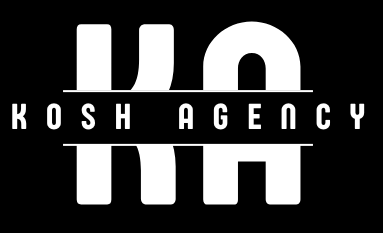
In the realm of digital marketing, Pay-Per-Click (PPC) advertising stands as a powerful tool for businesses to enhance their online visibility, drive targeted traffic, and achieve specific marketing goals. This comprehensive guide provides beginners with a clear understanding of what PPC advertising is, how it works, and its significance in the ever-evolving landscape of online marketing.
Chapter 1: Unveiling the Essence of PPC
Understanding PPC: Explore the fundamental concept of PPC advertising, where advertisers pay a fee each time their ad is clicked by a user.
Instant Online Visibility: Learn how PPC ads enable businesses to quickly appear at the top of search engine results and other digital platforms.
Chapter 2: The Mechanics of PPC Advertising
Ad Auctions: Gain insight into how PPC platforms, such as Google Ads, conduct real-time auctions to determine which ads appear for specific search queries.
Keyword Targeting: Discover the role of keywords in PPC campaigns and how advertisers bid on relevant keywords to trigger their ads.
Chapter 3: Platforms and Networks
Google Ads: Explore how Google Ads dominates the PPC landscape, providing businesses with access to a vast audience through search and display ads.
Social Media Platforms: Learn about PPC opportunities on social media networks like Facebook, Instagram, Twitter, and LinkedIn, offering precise audience targeting.
Chapter 4: Benefits of PPC Advertising
Immediate Results: Understand how PPC delivers instant visibility, making it an effective strategy for time-sensitive promotions.
Targeted Reach: Discover how precise audience targeting ensures your ads are shown to users most likely to convert, optimizing your advertising spend.
Chapter 5: Structuring Effective PPC Campaigns
The structure of your PPC campaigns plays a critical role in their success. Well-organized campaigns ensure that your ads are targeted, relevant, and capable of achieving your marketing objectives. This chapter explores the essential elements of structuring effective PPC campaigns.
- Campaign Structure:
Campaign Goals: Clearly define the objectives of your PPC campaign. Whether it’s driving sales, generating leads, or increasing brand awareness, your campaign structure should align with your goals.
Segmentation: Divide your campaigns into meaningful segments based on product categories, services, locations, or any other relevant factors. This allows for better control and customization of your ad groups.
- Ad Groups and Keywords:
Ad Group Relevance: Each ad group should focus on a specific theme or topic related to your campaign goal. This ensures that your ad copy, keywords, and landing page are closely aligned.
Keyword Research: Conduct thorough keyword research to identify the terms and phrases your target audience is using to search for your products or services.
Keyword Grouping: Group similar keywords together within each ad group. This makes it easier to create targeted ad copy and match keywords to user intent.
- Compelling Ad Copy:
Clear Messaging: Craft ad copy that directly addresses your audience’s needs and showcases the unique value your business offers.
Keyword Inclusion: Incorporate your target keywords into your ad copy to increase relevance and improve the quality score of your ads.
Call to Action (CTA): Include a strong and clear CTA that prompts users to take the desired action, whether it’s clicking through to your website or making a purchase.
- Ad Extensions:
Enhance Visibility: Utilize ad extensions to provide additional information such as site links, callouts, and structured snippets. These extensions enhance the visibility of your ads and offer more value to users.
Relevance: Ensure that the ad extensions you choose are relevant to the specific ad group and the information users are likely seeking.
- Landing Page Alignment:
Consistency: The landing page you direct users to should align seamlessly with your ad’s messaging and offer. This provides a consistent user experience and enhances the chances of conversions.
Relevance: Ensure that the landing page contains the information users are expecting to find based on the ad they clicked.
- Testing and Optimization:
A/B Testing: Continuously test different ad variations to identify what resonates best with your audience. Experiment with different headlines, ad copy, and CTAs.
Keyword Performance: Monitor the performance of keywords within your ad groups. Pause or replace underperforming keywords and focus on those driving results.
Chapter 6: Measuring Success with Metrics
Click-Through Rate (CTR): Understand the importance of CTR in gauging the effectiveness of your ads in generating clicks.
Conversion Tracking: Learn about tracking conversions, whether it’s a sale, sign-up, or download, to assess the direct impact of your PPC efforts.
Chapter 7: Budgeting and Bidding Strategies
Setting Budgets: Discover how to set budgets that align with your business goals and ensure effective spending.
Bid Management: Explore different bidding strategies, from manual to automated, to optimize your ad placements and maximize results.
Chapter 8: Optimizing PPC Campaigns
Optimization is the backbone of successful PPC campaigns. It involves analyzing data, making data-driven adjustments, and fine-tuning various elements to achieve better results. This chapter explores the strategies and practices for effectively optimizing your PPC campaigns.
- Keyword Optimization:
Regular Review: Regularly review the performance of your keywords. Identify high-performing keywords that drive conversions and consider expanding on them.
Negative Keywords: Continuously refine your negative keyword list to prevent your ads from showing for irrelevant searches, saving your budget for more relevant clicks.
- Ad Copy Testing:
A/B Testing: Experiment with different ad variations to determine which combinations of headlines, descriptions, and CTAs generate the best click-through and conversion rates.
Ad Extensions: Test different ad extensions to see which ones enhance the performance of your ads and provide more value to users.
- Landing Page Experience:
Relevance: Ensure that the landing pages users are directed to are directly related to the ad they clicked. A consistent and relevant experience increases the likelihood of conversions.
Page Speed: Optimize landing page loading times to minimize bounce rates. Slow-loading pages can negatively impact user experience and conversion rates.
- Bid Management:
Automated Bidding: Leverage automated bidding strategies provided by PPC platforms. These strategies adjust bids in real time based on factors like user behavior and conversion likelihood.
Manual Adjustments: Regularly review and adjust your bids manually, especially for high-performing keywords or during promotional periods.
- Quality Score Improvement:
Keyword Relevance: Ensure that your keywords are closely aligned with your ad copy and landing pages. Higher keyword relevance contributes to a better Quality Score.
Ad Copy Relevance: Craft ad copy that directly relates to the user’s search query, ensuring a seamless user experience from search to click-through.
- Monitoring Competitors:
Competitive Analysis: Keep an eye on your competitors’ ads and strategies. Understand what works for them and identify opportunities to differentiate and excel.
Ad Position: Monitor your ad position compared to competitors. Sometimes, a slightly higher bid can improve visibility and clicks.
- Conversion Tracking and Analytics:
Goals and Conversions: Track different types of conversions, such as sales, sign-ups, downloads, or form submissions. Understand which campaigns drive the most valuable actions.
Analytics Review: Regularly analyze data from your PPC campaigns in conjunction with website analytics to gain insights into user behavior and the customer journey.
Conclusion
In the ever-competitive digital landscape, understanding the core concepts of PPC advertising is crucial for businesses aiming to make a significant online impact. This guide equips beginners with a comprehensive overview of PPC’s mechanics, benefits, platforms, and best practices, enabling them to embark on successful PPC campaigns that drive traffic, conversions, and business growth.
